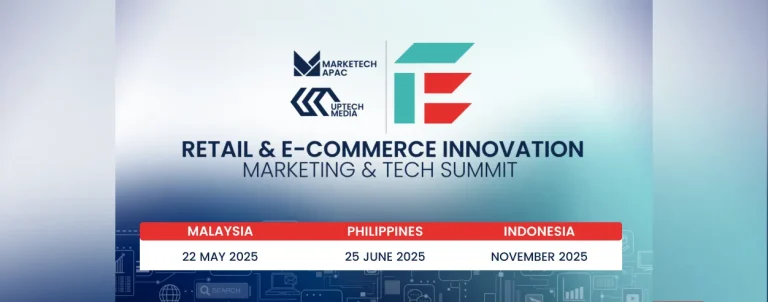In Southeast Asia, where booming digital adoption meets fragmented infrastructure and complex geography, logistics plays a critical role in shaping customer experiences, brand reputation, and overall business sustainability. From last-mile delivery challenges in dense urban centres to reaching remote rural areas across thousands of islands, the logistics landscape in the region is both a massive opportunity and a significant hurdle.
As e-commerce continues to surge across countries like Indonesia, the Philippines, Vietnam, and Thailand, the pressure is on for brands and platforms to streamline fulfilment, optimise delivery times, and ensure reliability. In this context, logistics is not just a support function—it’s the engine that powers growth, builds trust, and determines who wins in Southeast Asia’s dynamic digital marketplace.
For our latest Beyond The Cart feature, UpTech Media caught up with Ray Caguin, country director for the Philippines at Locad on the growth of logistic solutions in the region to boost e-commerce growth, and how brands should ride the evolving trends shaping the transformation of logistics solutions for their e-commerce strategies.
Driving growth shifts in e-commerce logistics in SEA
When asked about the rapid growth of e-commerce driving shifts in Southeast Asia’s logistics operations, Ray stated that while there are many trends shaping this industry–there are two examples that are worth mentioning: infrastructure in countries and service-level capabilities.
Speaking about infrastructure, he said, “Roads need to increase and widen as vehicle movement increases due to increased deliveries; in the same line, condominiums, commercial establishments, and the like now have to place pick or drop points as more and more people rely on e-commerce to get their goods or send their out their goods.”
He then added for the service-level capabilities example, “Tracking, monitoring, real-time updates, and customer success all have greater importance now as consumers demand visibility not just on their products but also on last-mile movements.”
He also noted that one trend that many enterprises are focusing on to improve e-commerce logistics is having a reliable warehouse management system.
“[It is] very critical to have a warehouse management system that can handle, facilitate, and manage omnichannel inventory stock management that is capable of tracking B2C and B2B orders and the various value-added services and customisations that a typical e-commerce business would need to stand out and be differentiated from its competitor brands,” he stated.
How to shape e-commerce logistic implementation
Ray stressed that in implementing e-commerce logistics, businesses are increasingly realising the need to outsource fulfilment and supply chain management, end-to-end, to experts.
“Brands and businesses realise their need to focus on their marketing and their product development while they need to leave the costs and expenses of managing the supply chain to experts who are truly focused on enhancing and developing in this field,” he said.
Ray also added that with the speed at which marketplaces are developing and improving on their service-level agreement (SLA) requirements to brands, having brands manage their own fulfilment becomes too difficult to manage on their own, and the level of complexity would and is costing brands various financial leakages.
When asked about how e-commerce and logistics companies should collaborate to address the evolving delivery demands of Southeast Asian consumers, he stated, “Transparently, collaboration is critical, and there must be more of it purposefully. Ultimately, logistics is filled with niche expertise, and when these experts combine their services into one end-to-end service, it yields a highly efficient and cost-effective service.”
Addressing consumer behaviours, regional differences
What makes logistics in e-commerce across Southeast Asia truly unique, according to Ray, is that not only does consumer behaviour help shape that uniqueness, but also even culture and cultural standards and principles and governmental policies, all these things shape strategies in the region.
“For example, some countries have better road infrastructure while others are still developing; these can have a massive impact on the speed of delivering parcels to the consumer or it can even affect the packaging and fees of a product,” he noted.
He further added, “The less conditioned roads, the more safety and bubble wrap or the like the parcel will need. In terms of behaviour, a modern city may already be used to receiving things much faster, while a developing country may still have consumers able to have more tolerance when it comes to the speed of deliveries.”
When asked about how the unique logistical needs of different countries in the region be addressed while maintaining a unified approach, Ray said, “People want to receive their goods in good condition and they want to receive in a timely manner, ideally faster than if they had just gone to the retail store to purchase the item.”
He added, “These are fundamental, and this ultimately is what unites the various approaches. Speed of getting the goods from one point to a consumer and getting the goods in a safe manner that ensures the quality of the goods is intact.”
On enhancing delivery operations
Ray stressed that the e-commerce supply chain and logistics have no ‘silver bullets’, and that an enterprise has to be excellent in all things because one element affects the entire engine.
“If your deliver fast but goods are packaged horribly, inventory is out of sync and parcels are dented when they arrive to the customer, the speed is useless. On the other hand, very well packed parcel and arriving very pristine but arrives days or weeks from the purchase, you can bet that customer will not order from you again,” he explained.
For him, this is what makes supply chain both a challenge and exciting, as it demands such a level of excellence and consistency across the board in all the variables and levers.
“Same-day and express delivery will eventually become the demand and the expectation in SEA. Right now, it is still 2-3 days, but in some parts of SEA, last-mile expectations are already much quicker. An e-commerce first fulfilment centre that is designed and geared towards servicing e-commerce ways and movements of goods,” he said, speaking on what lies ahead for the future of the industry.
When asked for advice on how businesses should collaborate with one another to boost their e-commerce offerings, Ray concluded, “Transparently, collaboration is critical, and there must be more of it purposefully. Ultimately, logistics is filled with niche expertise, and when these experts combine their services into one end-to-end service, it yields a highly efficient and cost-effective service.”
***
Effective logistics solutions are vital for the sustained growth and success of e-commerce in Southeast Asia. With the region’s rapidly expanding digital economy and geographically diverse landscape, robust logistics networks enable faster, more reliable, and cost-efficient deliveries. They bridge the gap between urban centers and remote areas, support cross-border trade, and enhance customer satisfaction through timely and transparent service. As competition intensifies and consumer expectations evolve, investing in smart, scalable, and localized logistics infrastructure will be key to unlocking the full potential of e-commerce in Southeast Asia.












